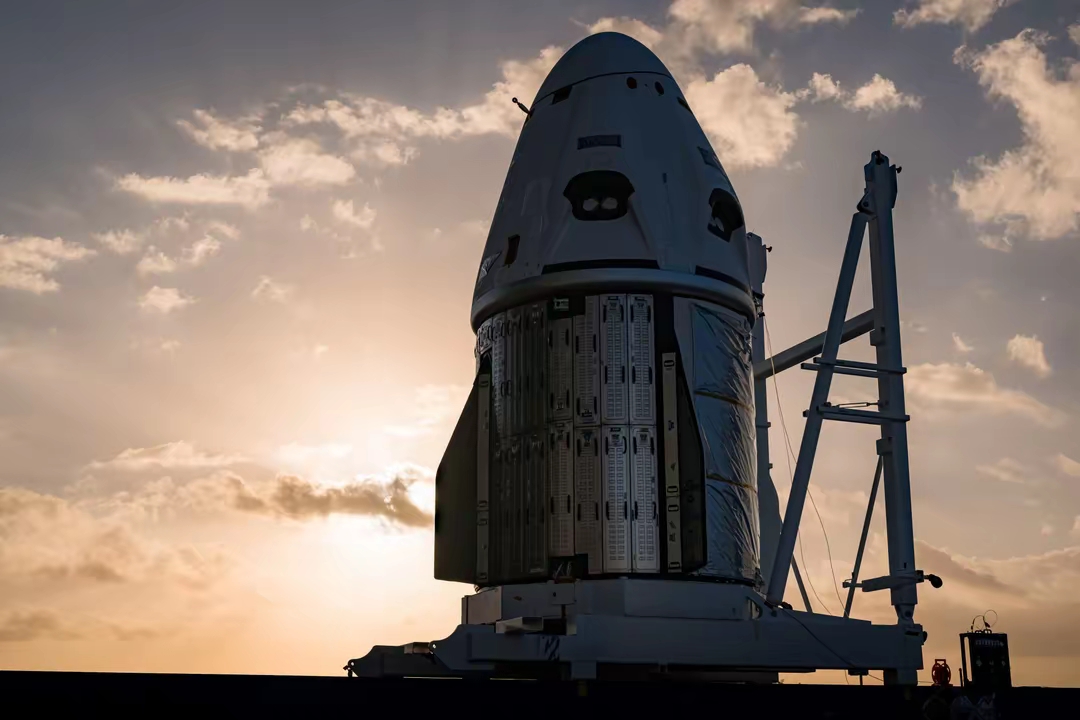
On June 5th local time, a fierce verbal battle erupted between Elon Musk, founder of SpaceX, and US President Trump. Musk said that in light of Trump's statement about canceling government contracts, SpaceX will immediately begin retiring its Dragon spacecraft. This statement is like a heavy bomb, instantly causing a thousand waves in the US aerospace field, and people are beginning to explore what impact the retirement of the Dragon spacecraft will have on the US aerospace industry.
The Dragon spacecraft holds a pivotal position in the US aerospace industry. Since the retirement of the US space shuttle in 2011, for a long time, American astronauts relied mainly on Russia's Soyuz spacecraft to travel to and from the International Space Station. This dependence not only incurs high costs, with each ride costing around $80 million, but also causes inconvenience in political and other aspects, greatly limiting the autonomy of the United States in the field of manned spaceflight. To change this situation, the National Aeronautics and Space Administration (NASA) launched the "Commercial Crew Project" and signed contracts worth $2.6 billion and $4.2 billion respectively with SpaceX and Boeing in 2014, aiming to complete the development of the "Crew Dragon" spacecraft and the "Starliner" spacecraft, and carry out manned flight missions to the International Space Station.
In 2020, the "Dragon" spacecraft successfully completed a manned flight mission, becoming the first spacecraft in the United States to send astronauts into space since the retirement of the space shuttle. Afterwards, it carried out multiple manned space missions and became the main force for transporting astronauts to and from the International Space Station in the United States. According to a report released by the US Congress in 2024, NASA has invested over $8.4 billion in commercial manned space programs, with SpaceX accounting for about 30%. However, the number of completed manned missions accounts for 100% of all manned space missions. However, Boeing's "StarCraft" has had a bumpy fate with frequent malfunctions.
If Musk really starts retiring the Dragon spacecraft, the impact on American aerospace will be comprehensive and far-reaching.
In terms of manned space missions, American astronauts will face significant challenges in traveling to and from the International Space Station in the short term. Boeing's' Interstellar Airplane 'is currently experiencing continuous malfunctions, which is a great embarrassment. The United States is likely to once again fall into the dilemma of relying on foreign spacecraft, and purchasing seats for the "Soyuz" spacecraft from Russia is not only expensive, but also subject to many uncertainties in today's complex and ever-changing political relations. This is undoubtedly a heavy blow to the United States, which has always regarded itself as a space power. Its position and reputation in the international space field will also be greatly damaged, and the United States' voice in international space cooperation may be weakened as a result.
In terms of future space exploration programs, the US manned moon landing program "Artemis" already faces many challenges, among which high cost and slow progress are two prominent issues. SpaceX's Starship, with its significant cost and technological advantages, was widely believed to have the potential to replace traditional SLS rockets and Orion spacecraft for future manned lunar missions. But if the Dragon spacecraft is retired now, SpaceX's own development will inevitably be impacted, and its research and development investment and propulsion speed in projects such as starships may be greatly reduced. This in turn will affect the implementation of the Artemis program, and may even lead to further delays or stagnation of the program. The strategic layout of the United States in returning to the moon and subsequent deep space exploration will also be disrupted, gradually falling behind in the space race with other countries.
Of course, Musk's current statement of "retiring the Dragon spacecraft" seems more like a declaration in the midst of intense conflict, and there is still great uncertainty about whether it will be put into practice in the future. After all, the retirement of the Dragon spacecraft will also cause huge losses to SpaceX's own economic interests and commercial reputation. SpaceX has a long-term and deep cooperative relationship with NASA, and NASA will not easily allow the retirement of the Dragon spacecraft to put its manned space program in trouble. But the intense conflict between Musk and Trump has cast a shadow over the development of the US aerospace industry. The future direction of US aerospace is facing unprecedented variables, and its subsequent development deserves close attention from the global aerospace industry.

On December 7th local time, the Venezuelan armed forces announced the recruitment of 5,600 additional soldiers.
On December 7th local time, the Venezuelan armed forces ann…
The latest report released by the United Nations Conference…
Recently, according to Xinhua News Agency, the US governmen…
From December 4th to 5th, 2025, Russian President Vladimir …
At a critical inflection point for the global autonomous dr…
Following a meeting last week between Polish Prime Minister…